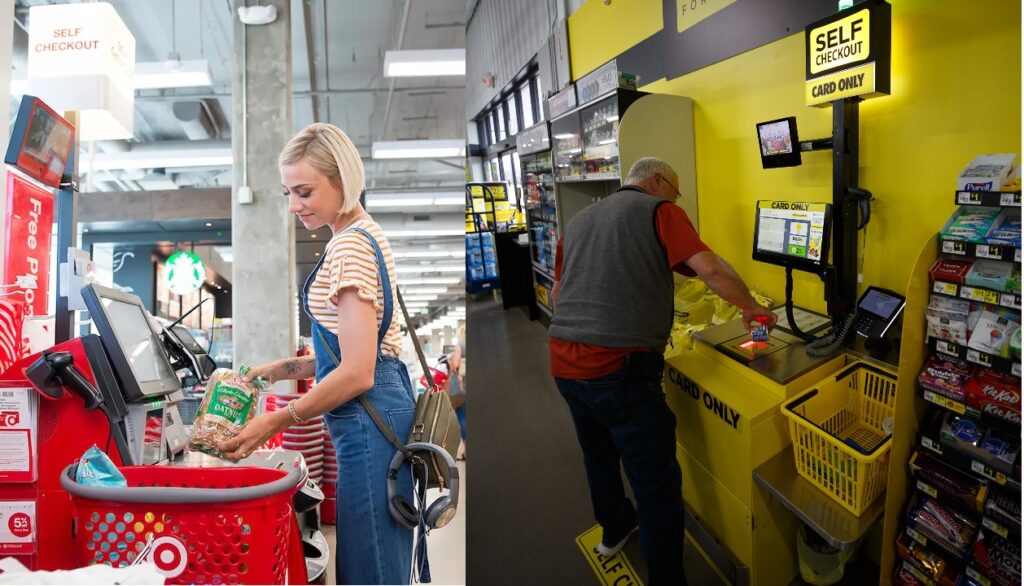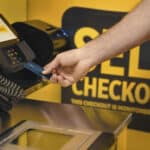
Self-checkouts aren’t going away at Target, but they are changing. At Dollar General, though, it’s a slightly different story.
The two retailers have become the latest to rethink their self-checkout strategies, as concerns about customer service, speed, efficiency and theft prompt new questions about whether self-checkout is always the best idea.
Target has decided self-checkout is still a good idea – if you have ten items or fewer. The retailer has decided to go national with a regional test it began last fall, limiting the use of self-checkouts to customers who have just a handful of items.
Beginning this coming Sunday, March 17, Target plans to impose ten-item limits on all self-checkouts in most of its nearly 2,000 stores nationwide. In addition, self-checkouts may be closed during certain hours, at individual stores’ discretion. To make up for it, Target says it will be “opening more traditional lanes staffed by our team members across all our stores” to check out shoppers with 11 items or more.
Last fall, a Target spokesman told Coupons in the News that “at select locations we are testing self-checkout lanes of 10 items or fewer in order to reduce wait times and better understand guest preferences.”
Now, roughly half a year later, Target has proclaimed that test to be a success. At the stores where limits were imposed, self-checkout was twice as fast, Target said. “By having the option to pick self-checkout for a quick trip, or a traditional, staffed lane when their cart is full, guests who were surveyed told us the overall checkout experience was better, too,” Target explained.
At Dollar General, meanwhile, you may find that your local store’s self-checkout is limiting you to five items or fewer – if the store has self-checkouts anymore at all.
“We believe there is truly no substitute for an employee presence at the front end of the store to greet customers and provide excellent customer service, including at checkout,” Dollar General CEO Todd Vasos told investors yesterday. So in some 9,000 of the 14,000 stores that currently have self-checkout stations, “we have begun immediately converting some or all self-checkout registers to assisted-checkout options,” Vasos explained. Traditional registers will become the default option, while assisted checkout – essentially “self-checkout” without the “self” – will be the backup during busy times.
The remaining stores that retain their current self-checkouts will limit them to shoppers with five or fewer items. And in about 300 stores, self-checkouts will be removed altogether.
The reason? Theft. Target says its changes are about “ease and convenience,” while Dollar General says its changes are because shoppers are stealing stuff.
“We spent a little bit of money,” Vasos said, “and we looked at an AI solution… that monitors hundreds of thousands of our self-checkout transactions.” What the retailer found was a whole lot of both “inadvertent” and “purposeful” theft, where shoppers didn’t scan their items properly or didn’t scan them at all. As a result, Vasos said, “we’ve made decisions based on that AI activity to pull out in 9,000 stores and go to that assisted checkstand.”
Self-checkouts have always been controversial. But they became pretty popular during the Covid pandemic, as more shoppers turned to self-checkout as a contactless option, which subsequently allowed stores to reduce staff at traditional checkout lanes.
Those days are over, though. At Dollar General, thieving shoppers have apparently ruined a good thing, while at Target, the retailer says limiting self-checkouts is a good thing. Shoppers at each store will soon be able to decide for themselves.
Image sources: Target/Dollar General










